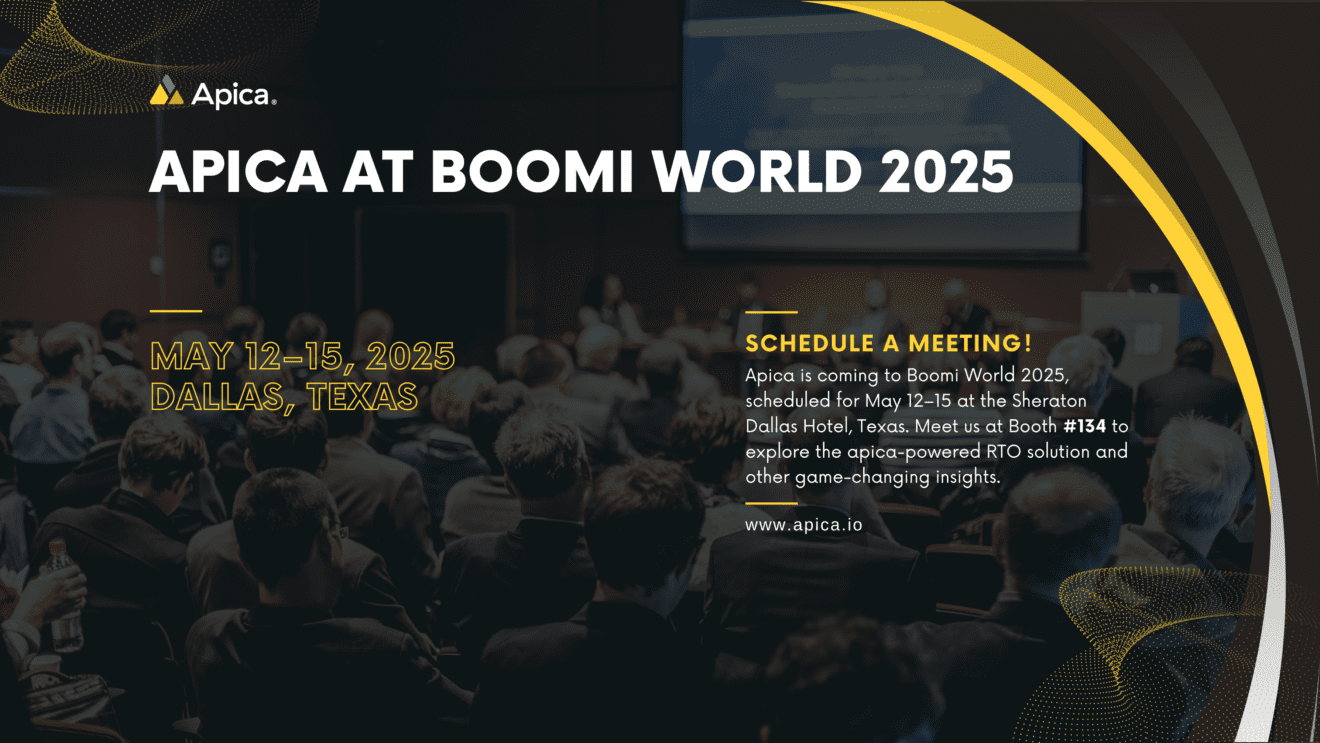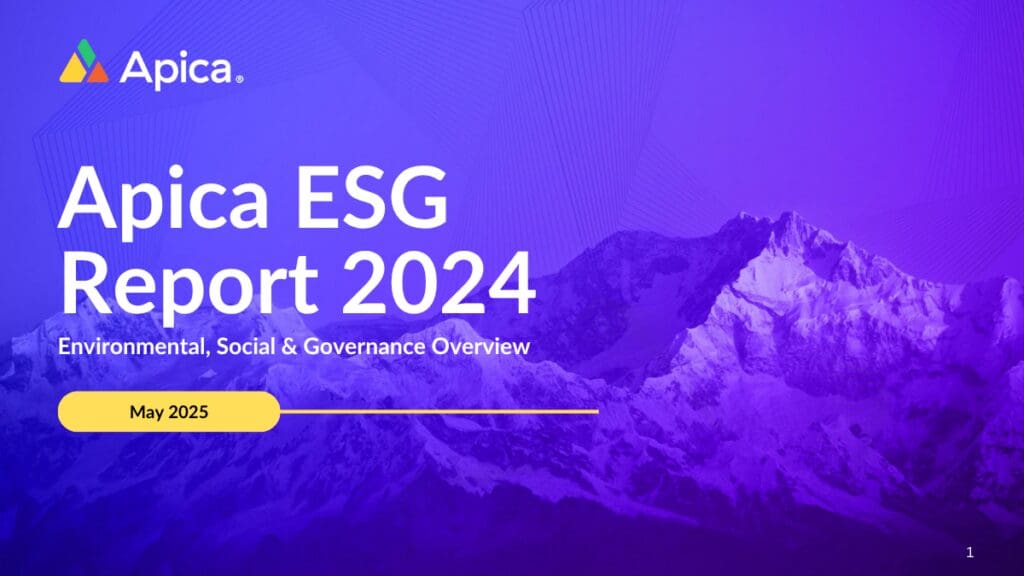We at Apica are elated to announce that we’ve been granted a patent for our unique innovations in the field of operational data management and data fabric.
A Flexera research has found that organizations often need help tracking and controlling cloud costs, with an estimated 30% of cloud spend being wasted. Enterprises are currently prioritizing observability solutions in order to tackle the problem of rising cloud expenses by pinpointing the underlying factors responsible for the increase.
Today, Observability has become a hot topic in the technology industry as organizations seek to optimize their systems for maximum efficiency. However, with the proliferation of data in the cloud landscape, managing and extracting meaningful insights from observability data has become increasingly complex. This is where federated observability comes in.
Federated observability enables the democratization of observability data by making it available on demand for data consumers. This approach ensures business agility at the lowest possible cost and puts data consumers at the center stage, allowing them to leverage data on demand to solve a wide variety of security, operational, and business problems and make critical business decisions.
Topology-Based Federated Observability
Implementing a topology-based observability data fabric allows enterprises to achieve observability data federation. This is essential for determining solutions to business problems such as improving customer experience and reducing the cost of cloud infrastructure. With federated observability, organizations can achieve Active visibility of their IT environment in real-time, through a single pane of glass.
apica.io is a powerful tool for federated observability, offering a range of features to help organizations manage their observability data more effectively. With Apica, organizations can unify, correlate, and visualize their data, providing them with Active visibility and enabling them to find the root causes of problems quickly. It also helps organizations reduce alert noise and determine business impact, allowing them to prioritize issues effectively.
Additionally, one of the most exciting features of Apica is its ability to prevent problems proactively. By combining topology-powered observability and AI operations, Apica can identify anomalies in the environment before they become costly problems. This is a game-changer for organizations seeking to optimize their systems and reduce downtime.
Why Federated Observability?
Federated observability is the way forward for organizations seeking to optimize their systems in the cloud landscape. Implementing a topology-based observability data fabric and using powerful tools such as apica.io can help organizations achieve Active visibility, find root causes of problems quickly, and prevent issues before they become costly.
In short, Organizations can achieve business agility at the lowest possible cost by democratizing observability data and putting data consumers at the center stage.
Challenges with Modern Observability
Although observability is a useful tool for modern, cloud-native architecture, it does have limitations. The complexity of dynamic, multi-cloud environments poses a challenge for legacy observability platforms, which struggle to keep up.
Additionally, the sheer volume, speed, and variety of data and alerts can result in signal loss and alert fatigue. The separation of infrastructure, development, operations, and business teams can cause critical insights to be missed or take longer to surface.
Furthermore, it can be difficult to establish causal relationships and identify which actions, features, apps, and experiences contribute to business impact.
Benefits of Federated Observability
The following are some of the key benefits of Federated Observability:
- Improved scalability: Allows for the collection and analysis of data across multiple systems and platforms, making it easier to scale and manage large volumes of data.
- Enhanced security: Enables data to be encrypted and distributed across multiple systems, reducing the risk of data breaches or security threats.
- Better collaboration: Enables different teams and departments to work together and share data seamlessly, facilitating collaboration and problem-solving.
- Increased flexibility: Provides a flexible architecture that can adapt to changing business needs and requirements.
- Improved cost-effectiveness: Reduces the need for expensive infrastructure and hardware, making it a cost-effective solution for managing and analyzing large volumes of data.
- Greater visibility: Offers a holistic view of the entire system, enabling better visibility and insights into performance issues and other challenges.
- Improved decision-making: Provides real-time data and insights, enabling better decision-making and more proactive problem-solving.
Upgrade to Federated Observability
The next step in the observability data model involves the concept of open observability, which means making data easily accessible to consumers on demand.
In the past, observability was limited to a single-vendor perspective, but now it can support hybrid, multi-cloud architectures with advanced technologies like machine learning, microservices, and containers. This redefines the line of accessibility, leading to better workflows, consumption models, cost management practices, and more.
Observability is now a crucial competence that all businesses must have to maintain their digital ecosystem. However, why is observability still exclusive, expensive, and challenging to achieve for most organizations?
Apica’s new observability maturity model aims to address the backlog of earlier stages and make stage 5 observability a priority, especially with the upcoming shift to decentralized online data with Web3. To keep up with such changes, federated observability will likely be adopted by the community in toto.
There are several reasons you should upgrade to Apica’s Federated Observability:
- Scalability: Apica enables the collection and analysis of data across multiple systems and platforms, allowing for the management of large volumes of data as your business grows.
- Flexibility: Apica’s Federated Observability provides a flexible architecture that can adapt to changing business needs and requirements, making it easier to integrate new systems and technologies.
- Enhanced security: Apica provides better security by distributing data across multiple systems and encrypting it, reducing the risk of data breaches or other security threats.
Apica uses industry-standard encryption techniques to protect data in transit and at rest, ensuring that sensitive data is protected at all times. Additionally, Apica provides fine-grained access control, allowing administrators to control who has access to what data.
- Improved collaboration: The concept of Federated Observability allows different teams and departments to work together and share data seamlessly, improving collaboration and problem-solving.
- Greater visibility: Apica’s Active Observability provides a holistic view of the entire system, enabling better visibility and insights into performance issues and other challenges.
- Cost-effectiveness: Federated Observability reduces the need for expensive infrastructure and hardware, making it a cost-effective solution for managing and analyzing large volumes of data.
- Better decision-making: Apica provides real-time data and insights, enabling better decision-making and more proactive problem-solving.
Conclusion
Federated Observability offers numerous benefits for businesses looking to improve their data management and analysis capabilities.
By enabling the collection and analysis of data across multiple systems and platforms, Federated Observability provides greater scalability, flexibility, and visibility, while reducing the risk of data breaches and other security threats. It also promotes better collaboration among teams and departments, leading to more efficient problem-solving and decision-making.
With its ability to adapt to changing business needs and requirements, Federated Observability is an essential tool for businesses looking to stay ahead of the curve and remain competitive in today’s rapidly evolving digital landscape.
At Apica, we understand the importance of feedback received from customers. Thus we’ve learned that often it gets challenging to navigate the complex and expensive observability environments with the basic conventional practices.
Customers require a solution that unifies various capabilities, simplifies data analysis and handling, and enables them to leverage open-source tools while still working with their existing teams.
Apica is aiming to address the constantly emerging challenges in the observability and monitoring domain and will be sharing more information soon. Our team strives to build practical solutions every day and is excited to reveal the details soon. Stick around!
In a Glimpse
- Organizations prioritize observability solutions to tackle rising cloud expenses and pinpoint underlying factors responsible for cost increases.
- apica.io provides topology-based federated observability, enabling organizations to achieve Active visibility, find root causes of problems quickly, and prevent issues before they become costly.
- The benefits of federated observability include improved scalability, enhanced security, better collaboration, greater flexibility, increased cost-effectiveness, and improved decision-making.
- Apica is developing an observability maturity model to help organizations achieve open observability, offering tools that simplify data analysis and handling while leveraging existing teams.











